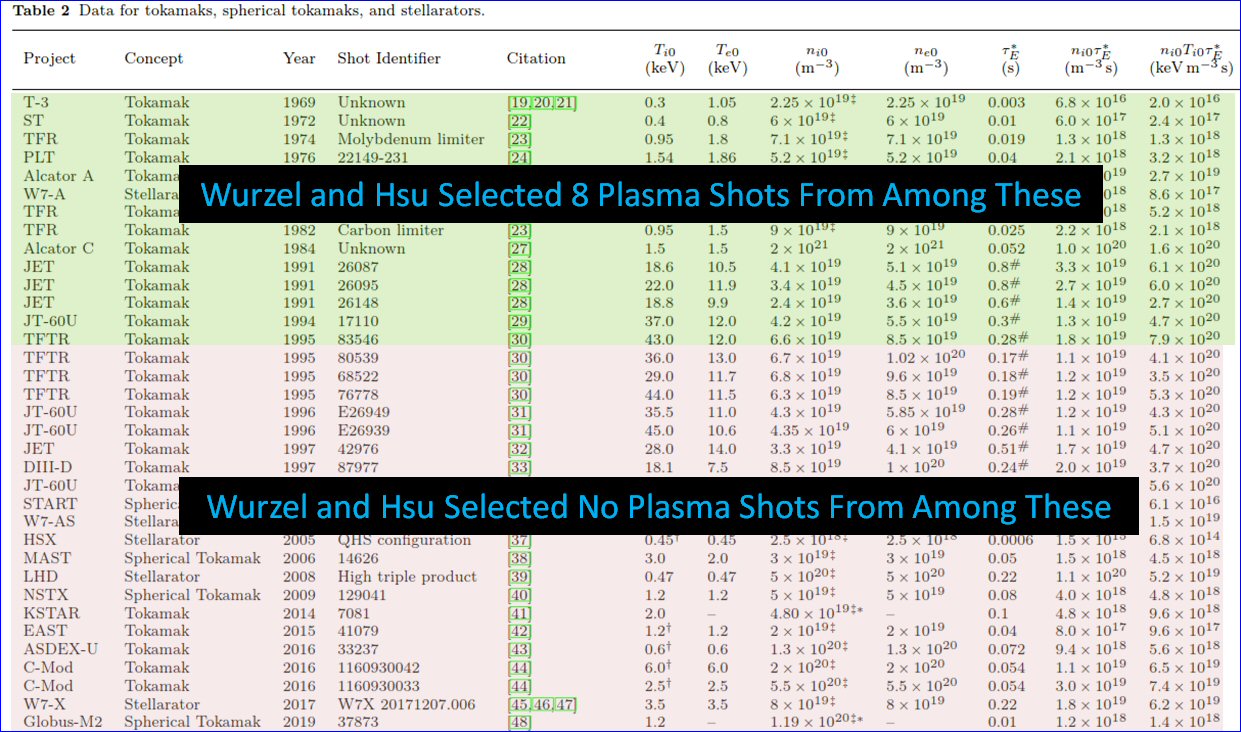#90 U.S. Department of Energy Scientists Will Give Presentation on Fusion Energy Progress
Return to ITER Power Facts Main Page
By Steven B. Krivit
Nov. 9, 2021
Two U.S. Department of Energy scientists with the Advanced Research Projects Agency-Energy (ARPA-E) plan to give a presentation on progress in nuclear fusion research at the annual meeting of the American Physical Society on Wednesday.
Samuel E. Wurzel serves as a technology-to-market advisor for ARPA-E. Scott C. Hsu serves as a program director for the agency.

Samuel E. Wurzel (l) and Scott C. Hsu (r)
On May 23, 2021, Wurzel and Hsu published a preprint of peak triple-product values from many fusion reactor types. The caption of their graph explains that the displayed values are those “that set a record for a given [reactor] concept vs. year achieved.”
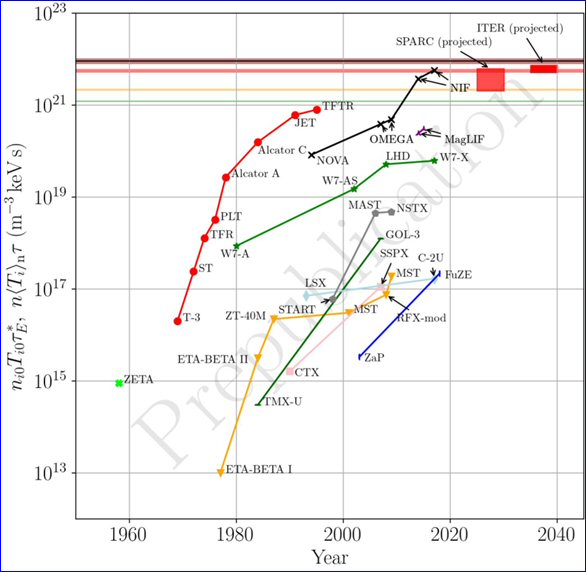
New Energy Times examined only the experiments in the tokamak reactor design category. The graph below isolates only experiments from that category.
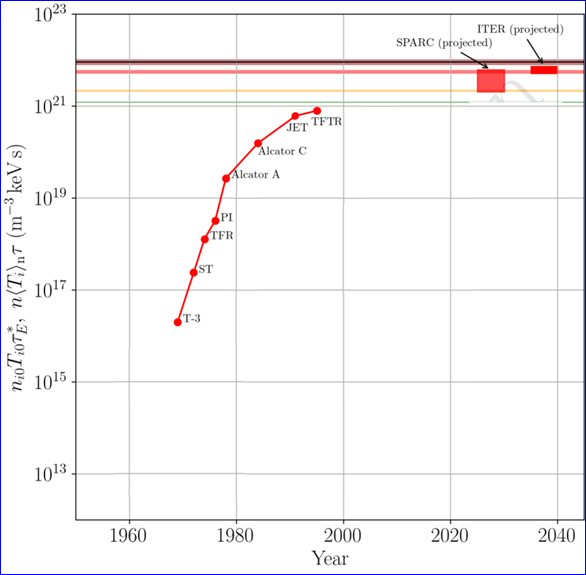
However, although Wurzel and Hsu displayed values for non-tokamak concepts through the year 2017, they omitted all data in the tokamak category from 1995 onward.
Table 2 from Version 1 of their pre-print, which appears as Table VI in Version 3 of their pre-print, provides an extensive list of fusion experiments performed in tokamak reactors. Wurzel and Hsu excluded all tokamak experiments beyond 1995.
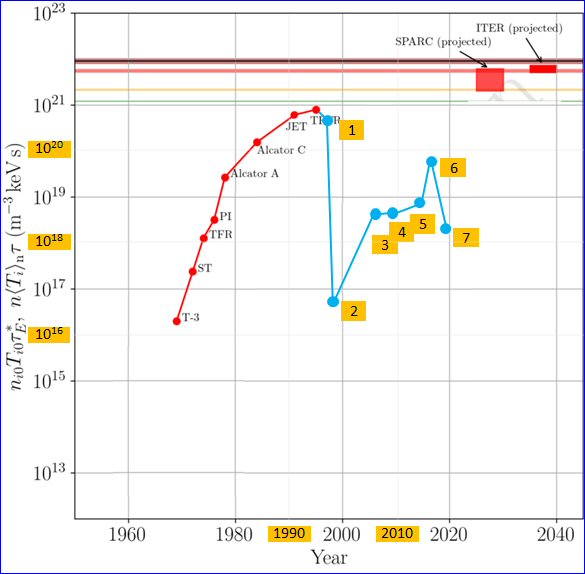
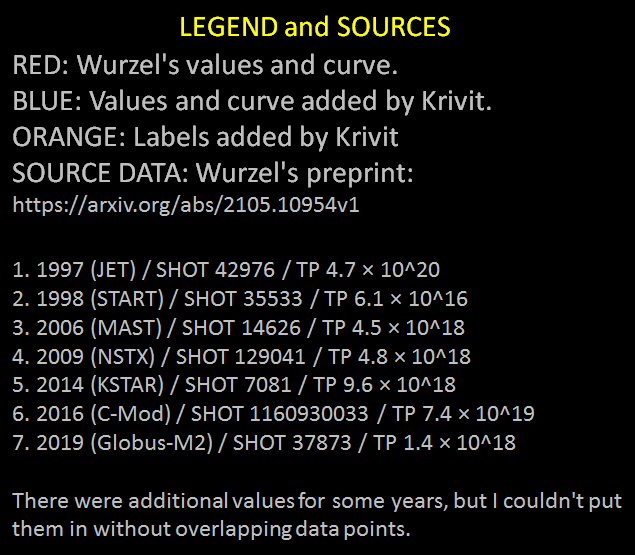
For a more accurate and honest display of progress in nuclear fusion in the last 70 years, New Energy Times published a report for readers — and investors — called “When Will We Get Energy From Nuclear Fusion?”
The latter part of that report presents a preliminary discussion of the awkward fact that one of the two required fuel sources for fusion — tritium — does not exist as a natural resource on Earth. This fact casts a dark cloud over the long-running sensationalist claims that the fuel for fusion is virtually unlimited.
A subsequent New Energy Times report provides the full discussion of the fusion fuel limitation.

